How to Start Your Subscription Box Program in 7 Simple Steps
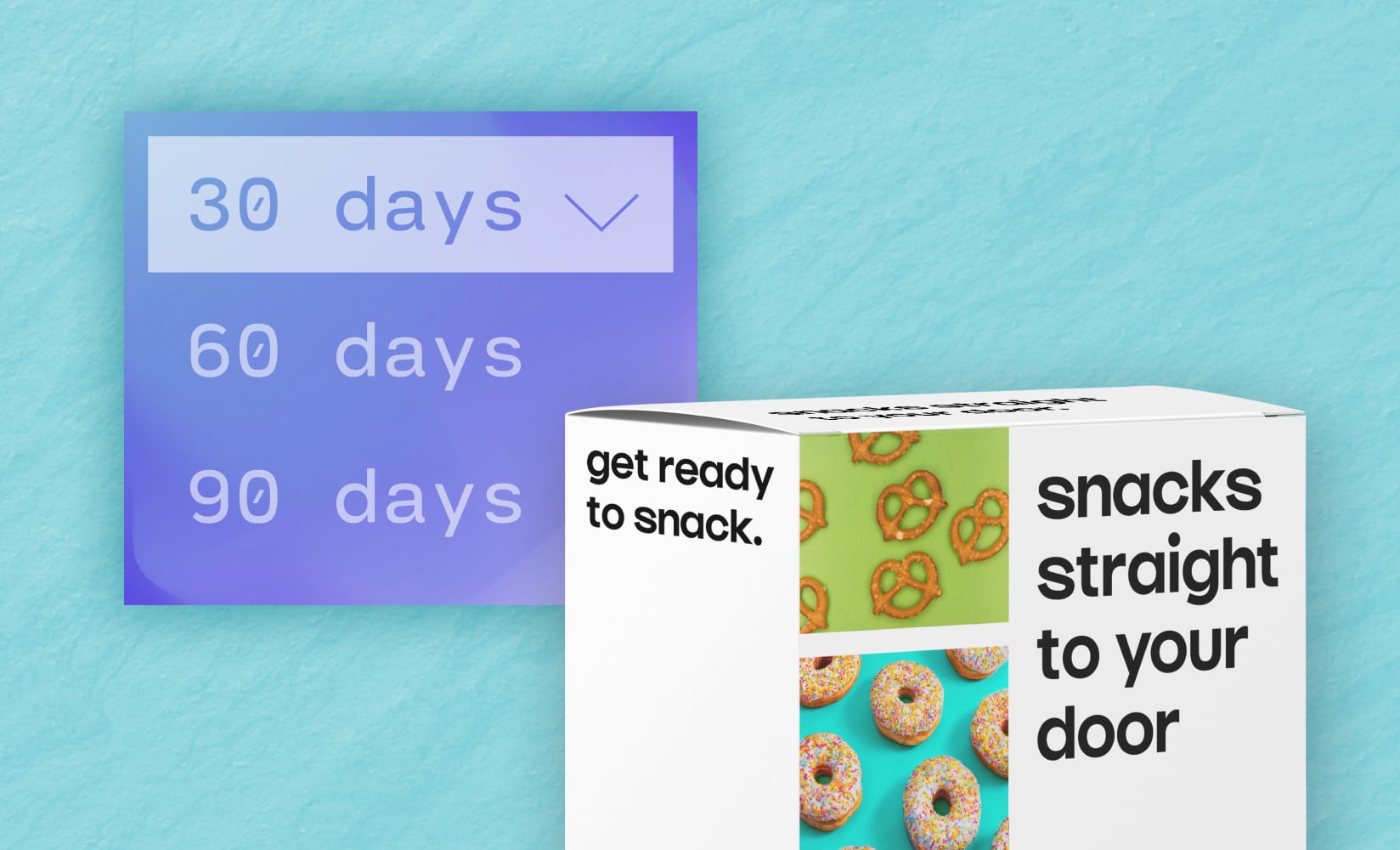
Subscriptions are big business, and it’s only getting bigger.
Ecommerce subscription sales in the US alone are projected to hit $38.2 billion by 2023. Compare that with 2019, when they were at just 16.5 billion dollars. That’s a giant leap in just four years!
It’s no mystery why. Subscriptions are convenient, freeing up our minds for all the other concerns of the day.
There is peace of mind achieved by never having to think about ordering toilet paper or coffee again. It will just magically show up at your doorstep when you need it.
Subscriptions can also be fun, delivering a selection of products personalized to your tastes but without you having to actually pick anything out. Choice overload is a real chore, as we all know.
As customers increasingly flock to subscription programs, smart merchants are rushing to add this functionality to their own stores to begin to capture those sweet, sweet recurring sales.
It’s a win for everyone. So, how do you start your own subscription box business?
Well, if you already have a store, you’ve got a headstart. You can easily choose to start a replenishment program with little extra effort. Just find the right app, build a sharp landing page to draw them in, and you’re in business.
If you are just starting out or are wanting to build out a curated subscription box, you’ll need to put in a little more work to set it all up. But, in the long run, you’ll be prepped for success.
In this post, we’ll cover:
Let’s start with the basics to determine if a subscription program is right for you; then we’ll get into making it a reality step-by-step.
#cta-visual-pb#<cta-title>Create a store that’ll drive subscriptions<cta-title>Customize your store the easy way to build the most effective sales funnel for your awesome new subscription program.Start designing now
What is a subscription box?
A subscription box is a selection of products fulfilled on a recurring basis (weekly, bi-weekly, monthly, quarterly, annually, etc).
Merchants enable automatic recurring payments and shipments for these orders, leaving customers to simply wait for it to come when they need it.
These are often either products that customers regularly need topping off (petcare items, human consumables, cleaning products, etc.) or personalized experiences (games, toys, clothing).
Types of subscription models and popular examples
Subscriptions fall into three main categories: Curation, Replenishment, and Access. Each of these represents a different way of shopping.
According to McKinsey’s 2018 report on subscription box businesses, curated subscriptions made up 55% of the subscription market, followed by replenishment at 32% and access at 13%.
No doubt the numbers have shifted somewhat on this since then, given how much the pandemic altered the way we shop.
Let’s look at these different subscription models and some examples you may know.
1. Curation
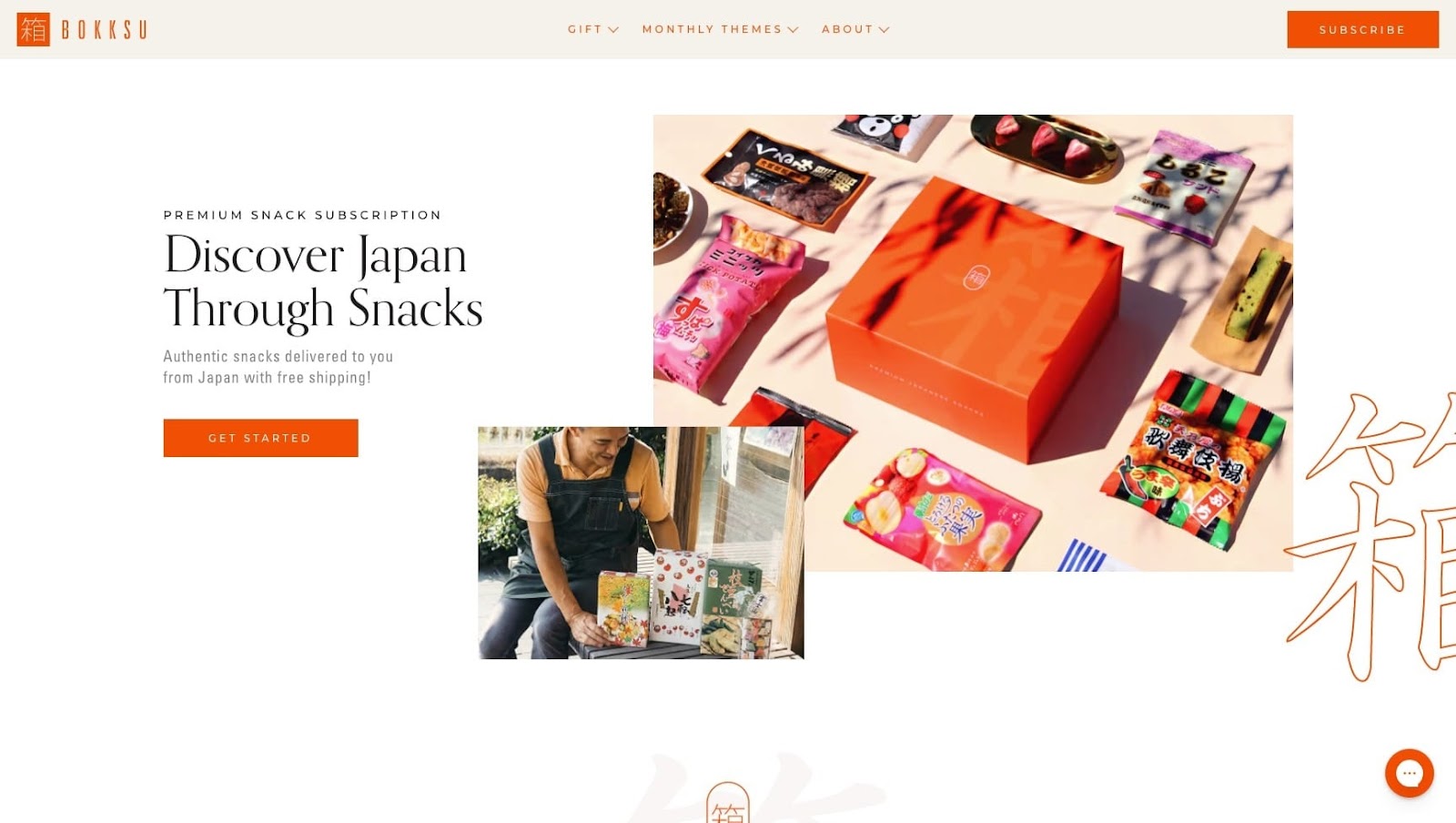
These are your personalized experiences.
You needn’t waste energy choosing exactly what you want—someone will do it for you. This is all about bringing excitement into your regular shopping routine.
Curated subscription boxes surprise and delight us—be they hard-to-find snacks or age-appropriate educational toys for child development.
Examples of top curated subscription boxes:
- Stitch Fix. Personalized clothing style service for men, women, and children based on sizing, style, and price level.
- KiwiCo. Age-based educational boxes for infants and toddlers to teens and young adults.
- Bokksu. Curated selection of Japanese snacks sent monthly.
2. Replenishment
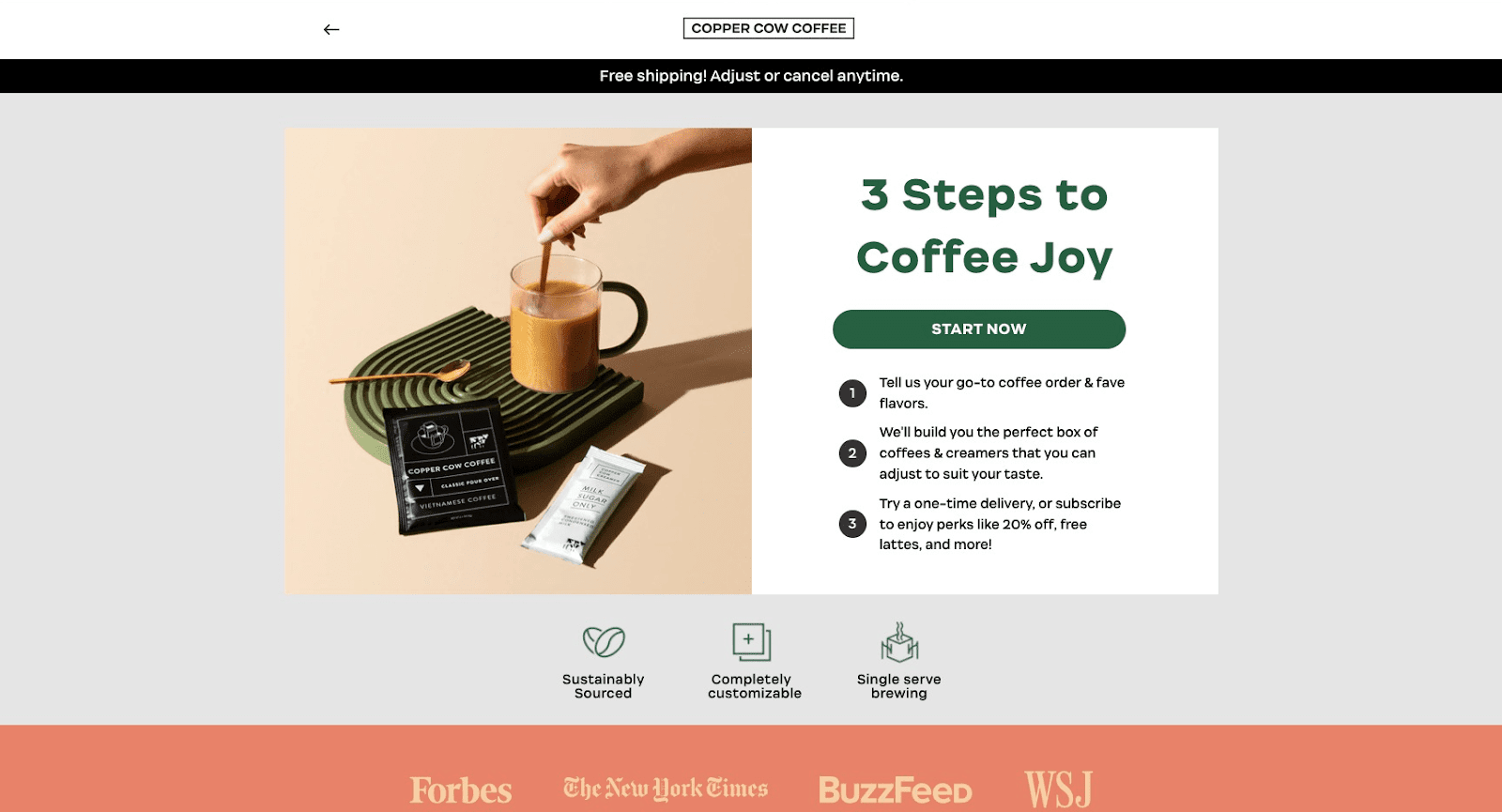
This is the stuff you need and keep needing. It’s your toilet paper, coffee, groceries, meal kits, pet food, cleaning supplies, etc. These programs are all about saving consumers time and money.
Instead of running out and buying more of your favorite single-origin coffee, it arrives at your place just as you need it. This sort of auto-replenishment system can easily run itself.
Examples of top replenishment subscription models:
- Amazon Subscribe & Save. Certain products can be subscribed to at a frequency of every two weeks to every six months for a 15% savings per order.
- Blueland. Eco-friendly cleaning supplies brand that offers refill subscriptions.
- Copper Cow Coffee. Single-serve Vietnamese pour-over coffee brand that offers a subscription service at a discounted price. Learn more about them in our feature story.
3. Access
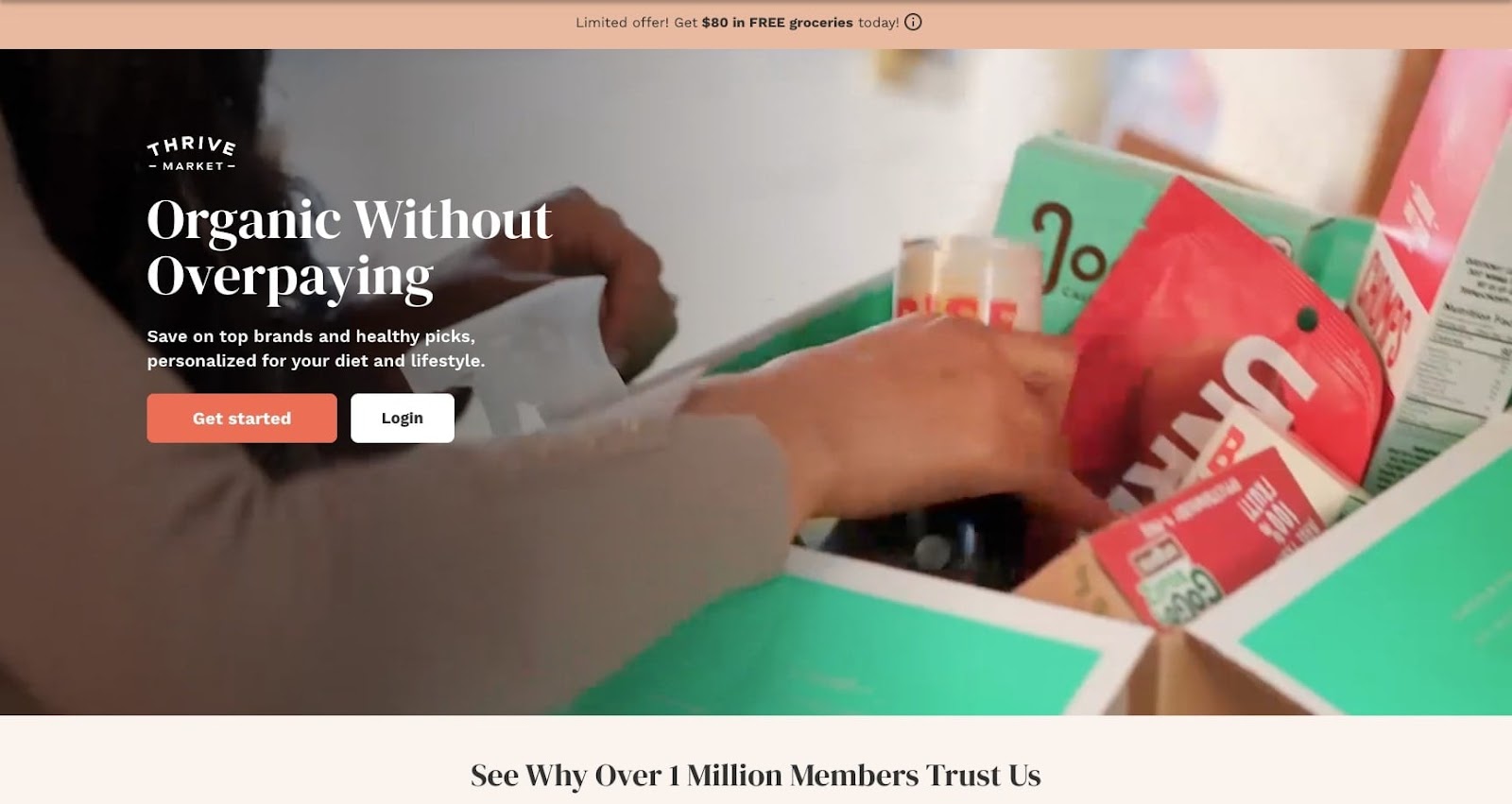
This is your VIP shopping experience. Exclusivity is the name of the game here.
With access subscriptions, people become members and are rewarded with special pricing and perks.
Some companies are members-only, whereas others have a member portal with member pricing and options.
Examples of top access subscription businesses:
- Thrive Market. Organic food marketplace for members only with discounted prices on everyday groceries.
- NatureBox. Healthy snack brand with a membership program for discounted rates and free shipping.
- Costco. Big box members-only retailer with wholesale pricing and other membership benefits.
Why should you start a subscription business?
If your product is something customers keep coming back for, a subscription model is a huge boon for you and your customers.
Or, if you sell an experience-worthy selection of products, you could update your operations to start curating regular offerings for your customers to surprise and delight them.
There is a lot of money to be made, with US subscription sales forecasted to exceed $32 billion in 2022.

A report by Pitney Bowes from 2019 found that 45% of consumers aged 18-34 are already enrolled in a subscription service, and 13% more were planning to enroll in the next year.
For brands that are a fit, the benefits are undeniable.
Benefits of a subscription business model
Let’s dig into some of the most significant benefits of running a subscription program.
- Recurring revenue stream. Your subscription program will ensure regular payments at the frequencies you’ve set (weekly, monthly, quarterly, etc) without putting so much effort into driving customers to repurchase.
- Order predictability. Along with the regular payments comes a predictable order flow, simplifying both your inventory forecasting and fulfillment processes.
- Customer retention and loyalty. Retaining customers is much cheaper than obtaining new customers, so making their experience pleasant and straightforward will keep them around and increase their loyalty to your brand.
Why a subscription program might not be for you
While it can be very profitable for many brands, the subscription model isn’t a one-size-fits-all solution for ecommerce businesses.
Many products are made for one-off purchases, and subscriptions only serve to complicate the shopping experience. You need to understand your product, your customers, and what the market will bear.
Disadvantages of a subscription business model
For certain brands, a subscription program could end up being a drag on business instead of a boost. There are a few reasons why this might be.
- The excitement has worn off. Curated boxes are a novelty, and the excitement of that novelty can fade over time. Staying relevant and stimulating can be difficult for certain niches.
- Your product isn’t a good fit. Let’s face it—some products aren’t meant for a subscription program. If it isn’t a fit, you want to know that before seeing your sales sag.
- The market is too competitive. Certain product niches have been done to death, and there are clear leaders there. Don’t dive into a niche that will prove overly difficult to stand out in. As an example, Dollar Shave Club and Harry’s would be hard to unseat in the men’s razor market.
7 key steps for starting your subscription box program
Now that you’ve considered the types of subscription models and the benefits and pitfalls of starting your own, it’s time to get down to what it takes to get your subscription program off the ground.
This is your soup-to-nuts guide to starting your subscription business. Let’s go!
1. Research product niches and competition
The first step for any product-based business is to research the market and find something that will fly off the shelves like hotcakes (why they’re on shelves, nobody knows) without fighting off too many hotcake sellers (is this hotcakes analogy getting a little overcooked?).
#cta-paragraph-pb#If you already run a successful ecommerce outfit with a popular product offering, much of this work is already done. You need only figure out how to either create an exciting curated product bundle or integrate a recurring order payment functionality. Either way, you can move to the next step to learn more about adding subscription capabilities to your store.
When researching product niches, you’ll want to start with what you have a passion for. If you don’t love what you’re selling, it’ll be harder to bring your A-game to the business.
After honing in on some product ideas that bring you joy, you can dig into their popularity and potential for profitability.
Pro tip: Use a tool like Google Trends or Exploding Topics to find out whether your product idea is trending or not. If they’ve peaked, you might want to keep looking for the perfect product.
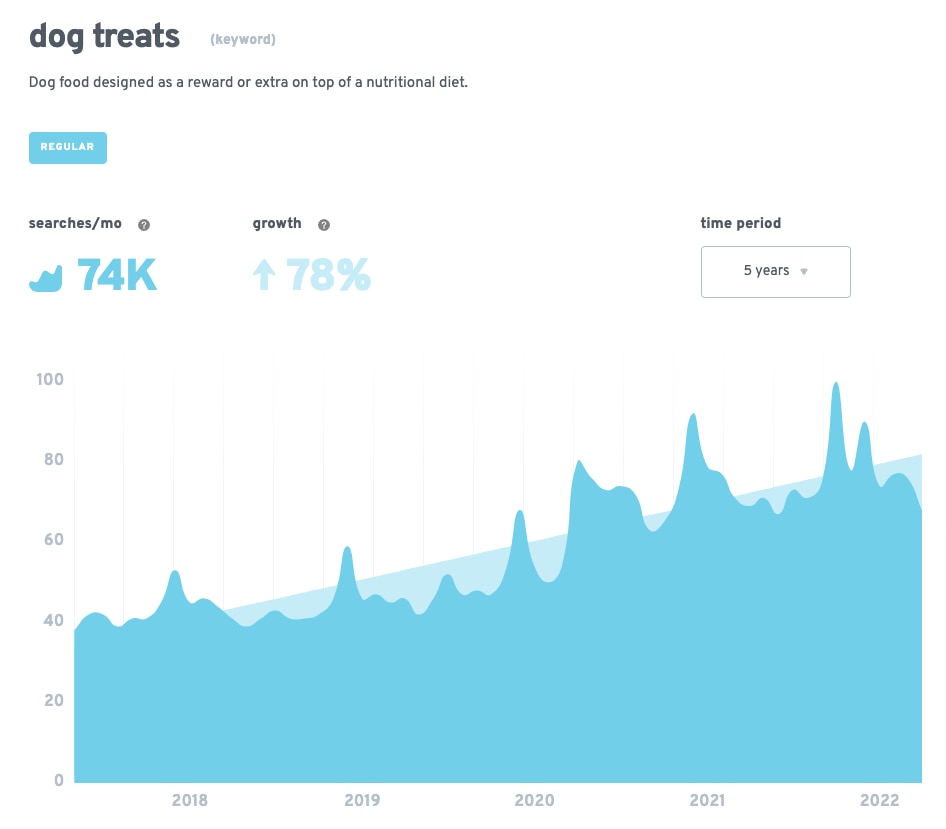
If you choose a product niche that is too narrow—like bowties for dogs, for instance—your market will be too narrow to bring in sales. If your product niche is too broad, your marketing will fall flat for having to attract everyone and their mother.
Niches that target a few particular audiences will usually have less competition and are easier to market since you know exactly who you are talking to. Your marketing messaging can be more personal and direct this way.
Your product niche will also determine the type of subscription model you will use.
If you want to sell apparel, a curated subscription box might be just the thing for your customers. But, if you sell fancy soap or coffee, replenishment could be just the ticket.
Knowing the products that are trending at any particular time will be key for choosing the right product and niche.
In our guide on trending products, I do a deep dive into how to do product research, top product niches, and some of the top trending products to sell.
“Identify your niche as precisely as possible. For example, you might be able to segment the niches by sub-niches like CrossFit, Korean beauty, and international snacks. Create the best possible customer experience and maximize retention by curating products specifically for a particular audience.”
— Tristan Harris, Sr. Marketing Manager at Thrive Agency
A few product niches you could consider are:
- Pet treats. One of the most subscribed to categories is petcare. Brands like Earthly Pet are focusing on keeping your pup in healthy treats.
- Gift boxes. Whether to surprise yourself or make others jump for joy, a curated monthly gift box is exciting to receive. Companies like Awebox are teaming up with cool brands to create incredible gift experiences.
- Specialized skincare products. There are many that follow niche schools of thought on how to take care of their skin. Brands like Bomibox Korean Beauty sell specialized beauty products to singular target markets.
- Wine. Replacing the uncertain art of choosing wine at the market by labels, brands like Dedalus curate your monthly bottle selection, so it’s always good and comes right to your door.
- Artwork. Finding great art to decorate the walls of your home can be tricky, so companies like Artbox have made it easy with new art from independent artists delivered to you each month.
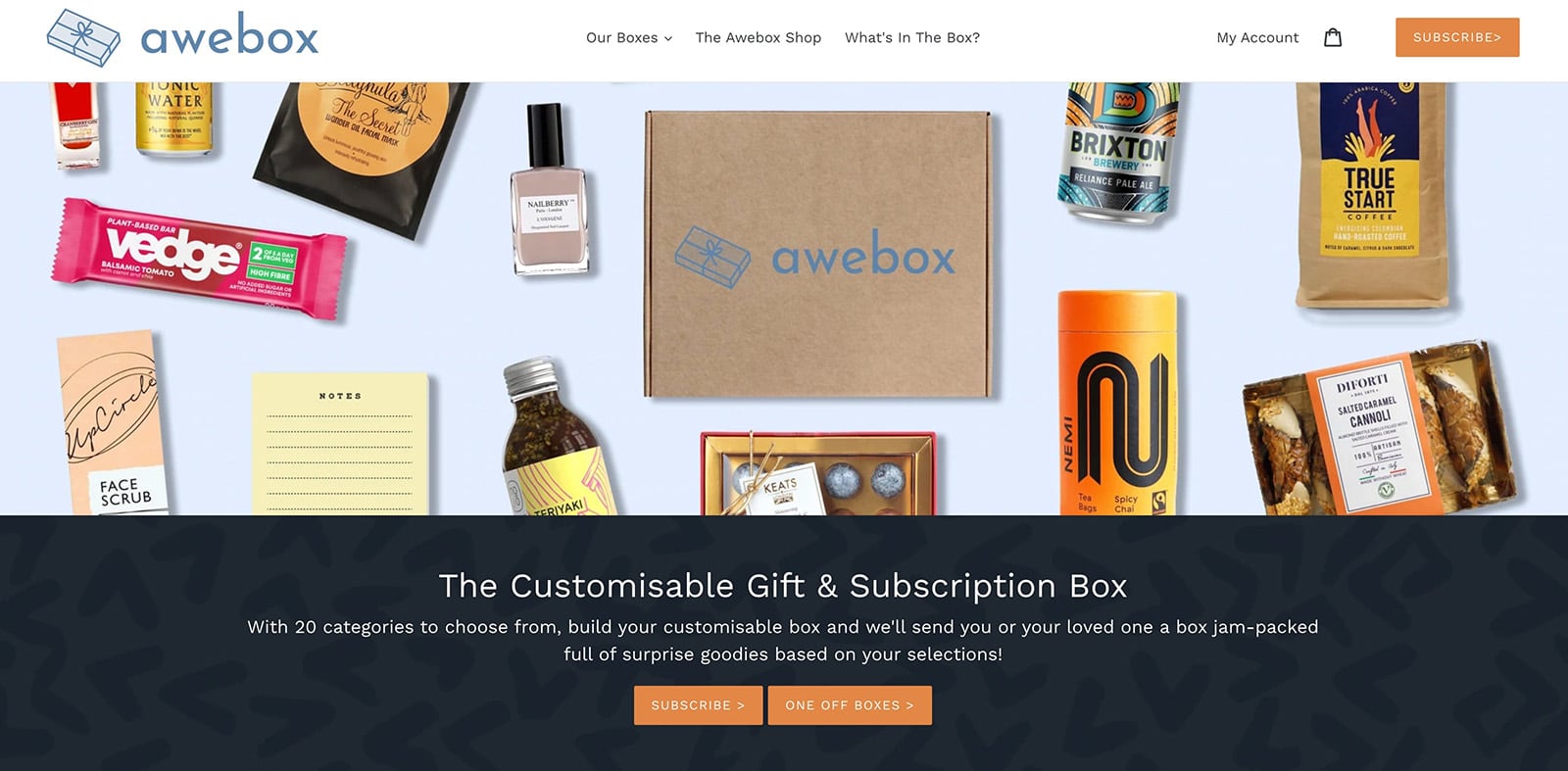
The other part of selecting a product niche is doing your competitor research. You have to ask yourself a few questions:
- Who else is selling in your niche?
- How much traffic do they get? (Estimate this with tools like SEMrush or Ahrefs)
- What are their strengths and weaknesses?
- What audiences are they targeting with their marketing?
- What sales channels are they using?
- How much do they charge for their products? Can you compete and make a profit?
By writing up a competitive analysis, you can better understand the market you are trying to enter and how you can stand out from your competition.
If you’ve gotten through this step with a product niche that has legs and isn’t oversaturated with competition, great work! Let’s move on.
#cta-mini-pb#See data-driven DTC shopping trends! Get access to our original research report featuring recommendations for store growth.Download the report
2. Choose your ecommerce platform and apps

With the vision of your subscription box bubbling up in your mind, you now need to find the proper outpost to make it a reality.
The ecommerce platform you choose will determine what solutions you’ll need to integrate a subscription program. The apps or extensions that come with your platform can help you add and manage your subscription program.
A few of the top ecommerce platforms you can use are:
- Shopify. A robust hosted platform that has much of what you need right out of the box, plus a ton of apps (7,000+) and themes (free and paid) to help you build and run your store more efficiently. Some of the top stores out there use Shopify.
- BigCommerce. Another ready-out-of-the-box hosted platform with lots of themes and over 1,000 apps for creating a truly custom shopping experience.
- Magento. This Abobe-owned open-source platform is a great option for stores with more complex product catalogs. It does not come with hosting, and store customization requires developers, but they have over 3,000 extensions in their marketplace.
- WooCommerce. An open-source ecommerce platform from WordPress that allows for endless customization with the help of developers. Over 700 extensions are available in their store, and WordPress has nearly 60,000 plugins.
When starting a subscription service, you want a robust platform that will enable you to add the necessary backend functionality to take recurring payments and automate the ordering process.
So, if you use a marketplace like Etsy or eBay for your store, starting a subscription program would be much more difficult. You’d need to take payment upfront and hold products out of inventory for future shipments.
At scale, using these marketplaces is unsustainable for subscriptions.
“When starting out, platform selection is a big thing people overlook. We’ve had businesses wanting to outsource fulfillment only to find that they’re using CrateJoy, which doesn’t integrate with their 3PL software, causing a big headache. We don’t see this issue with clients using platforms like Shopify and Recharge.”
— Elliott Davidson, Founder & Director at Parcel Master
If you go with a replenishment subscription, you could use Amazon as a sales channel for their Subscribe & Save program. You’ll need to use Fulfillment by Amazon (FBA), and you won’t own your customer relationships.
For Shopify and BigCommerce, apps like Recharge, PayWhirl, and Bold Subscriptions can provide recurring payment functionality with variable frequencies and automated notifications.
We rounded up the top Shopify subscription box apps, detailing the ratings, pricing, and features to help guide your decision on that platform.
If you want to build an access-based subscription program, AAAeCommerce’s Recurring Membership Payments app is a great fit.
#cta-visual-pb#<cta-title>Build a totally custom Shopify subscription box store<cta-title>Customize your store the easy way to build the most effective sales funnel for your awesome new subscription program.Start designing now
3. Sourcing your subscription products
For brand-new stores wanting to start a curated subscription box, product sourcing will determine what you can offer and at what price it is most attractive and profitable.
#cta-paragraph-pb#If you already have a store, a curated box may simply comprise a regularly updated product bundle with a unique SKU. Or, if you are going with replenishment for an existing product, you need only keep up with your inventory forecasting to maintain stock levels.
To build a subscription box that is always unique, you need to assemble a cast of products that fit well together and will delight the customer. Then, you need to do this on a regular basis.
To find products to fill up those boxes, you need the right vendors. They are out there, ready to work with you, but you have to do a bit of research to find them.
Here are some ways to find suppliers for your subscription products:
- Wholesale supplier websites. Sites like Alibaba, Tundra, and DHgate can give you access to niche suppliers with which you can start building relationships, assuring a regular flow of unique new products.
- Amazon. The largest retailer in the world, Amazon is chock full of small sellers. Since they don’t give you direct access to the vendors, you’ll need to do your research to find the contact information for the ones you might want to start a relationship with.
- eBay. Another massive platform full of merchants, eBay might be just the place to find a reliable supplier that would appreciate a regular customer.
- Trade shows. If you’d rather go straight to the source, wholesale trade shows have lots of vendors ready to supply you. Be warned though—unlike on sites like Alibaba, you can’t be totally sure about the reliability of these vendors. Do your due diligence.
- Crowdfunding sites. Fresh new products are coming up on crowdfunding sites every day. They are looking to make their ideas reality, and you are trying to find something nobody else has, so it could be the perfect setup.
With the right vendors, you can continue to source unique products without repeating this step.
Certain suppliers may even give you free samples in bulk to include in your subscription boxes as a way to market their products. This can help you increase your margins while giving them some marketing. Try approaching certain vendors with this idea to see if they’ll bite.
Find packaging that you can use for every order, no matter the selection of products, and build each one based on what the unboxing experience will be.
With curated boxes, unboxing is a vital part of the overall experience.
4. Pricing your subscription offering
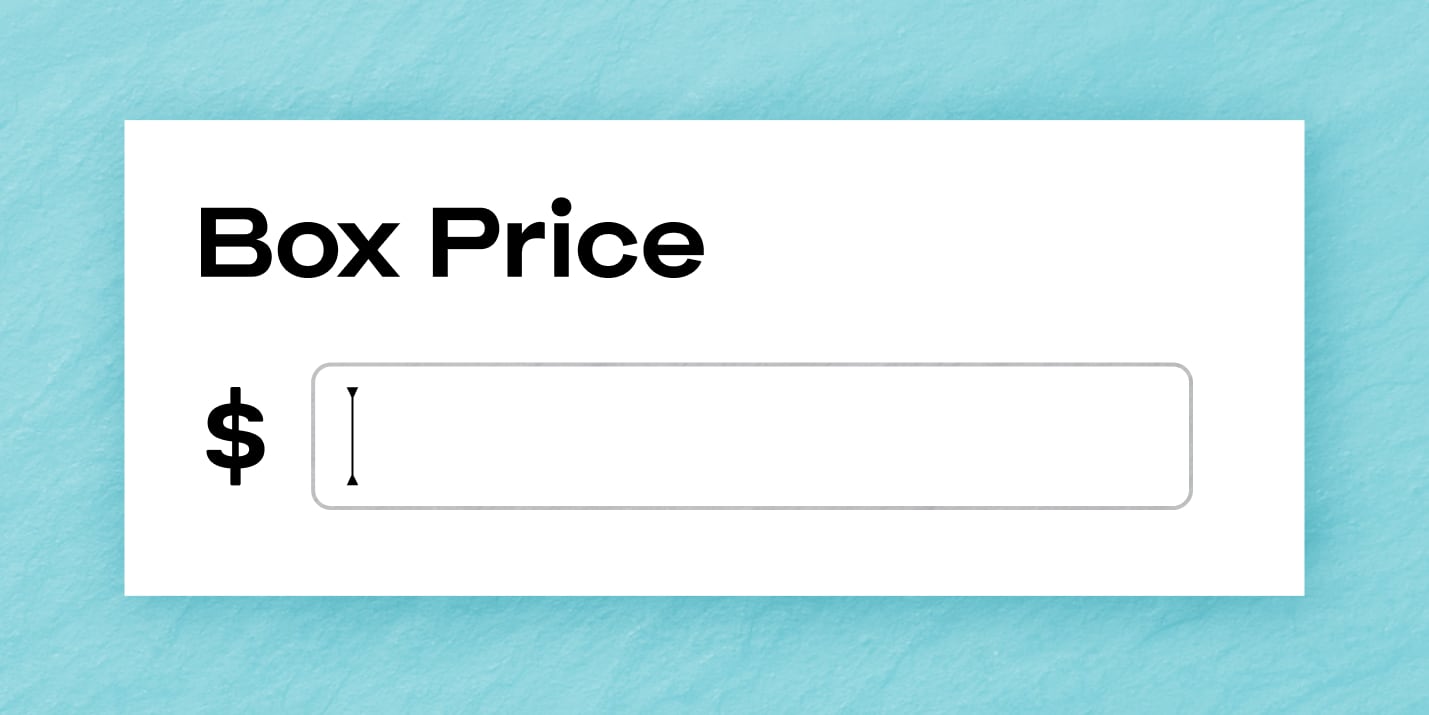
On to the all-important piece of the ecommerce puzzle—pricing.
You’ve done all the work to create an awesome subscription offering to reap the benefits of the recurring profits. So, how do you price your subscription box effectively?
First, let’s get the replenishment and access subscription pricing strategy out of the way.
For these subscription models, assuming you’ve already done the work of setting the retail price, you’re merely figuring out the sweet spot for the discount your subscribers will get.
If you are taking a membership fee for an access subscription scheme, you can afford to provide deeper discounts to your VIPs, showing the savings as a percentage off of regular retail. If you are replenishing, a 5-15% discount is often enough to get them to subscribe.
Pricing for curated experiences is a bit more complicated.
First, you need to account for all expenses associated with the box—your cost of goods sold (COGS), operating expenses (OPEX), and fulfillment costs—and then add your ideal margin. If possible, you should aim for a 20-40% margin for your subscription box.
The simplest formula for your retail pricing is Retail Price = Cost of Goods (COGS) + Markup.
#cta-paragraph-pb#Learn the best ways to price your products by reading The Guide to Retail Pricing Strategy: Pricing Your Products For Success.
Since your product costs will vary from month to month, the COGS number will need to be a good average. Some months you’ll have a higher gross margin; other months, it’ll be lower. Overall, it should level out, though.
“Aim for your subscription boxes to have a 30% profit margin. In addition to the cost of the products themselves, you need to pay for the packaging, assembly, shipping, and miscellaneous costs. You want to price your box at a value for customers, but you must make sure you make money from this venture.”
— Roy Morejon, President & Co-Founder of Enventys Partners
Now, you can’t fully nail down your price until you go back and consider your competitive analysis.
- What are your competitors charging for their subscription box?
- How does their offering compare to yours?
- What is the difference in perceived value between your competitors’ box and yours?
- Does your box include something unique that could account for higher pricing? Is it worth it?
You need to balance your profit margins with your ability to make sales. This will directly come down to the comparison of your subscription and that of your competitors.
5. Customizing your store
You’ve got your platform. You’ve got your products. You’ve priced your subscription for profitability.
Now, it’s time to create a store that will drive conversions and stick in the mind of your shoppers.
Ahead of making any big decisions on what your store should look like, take the time to define your brand identity and put it down in a style guide.
This would encompass your color scheme, font choices, brand voice, logo, and the like.
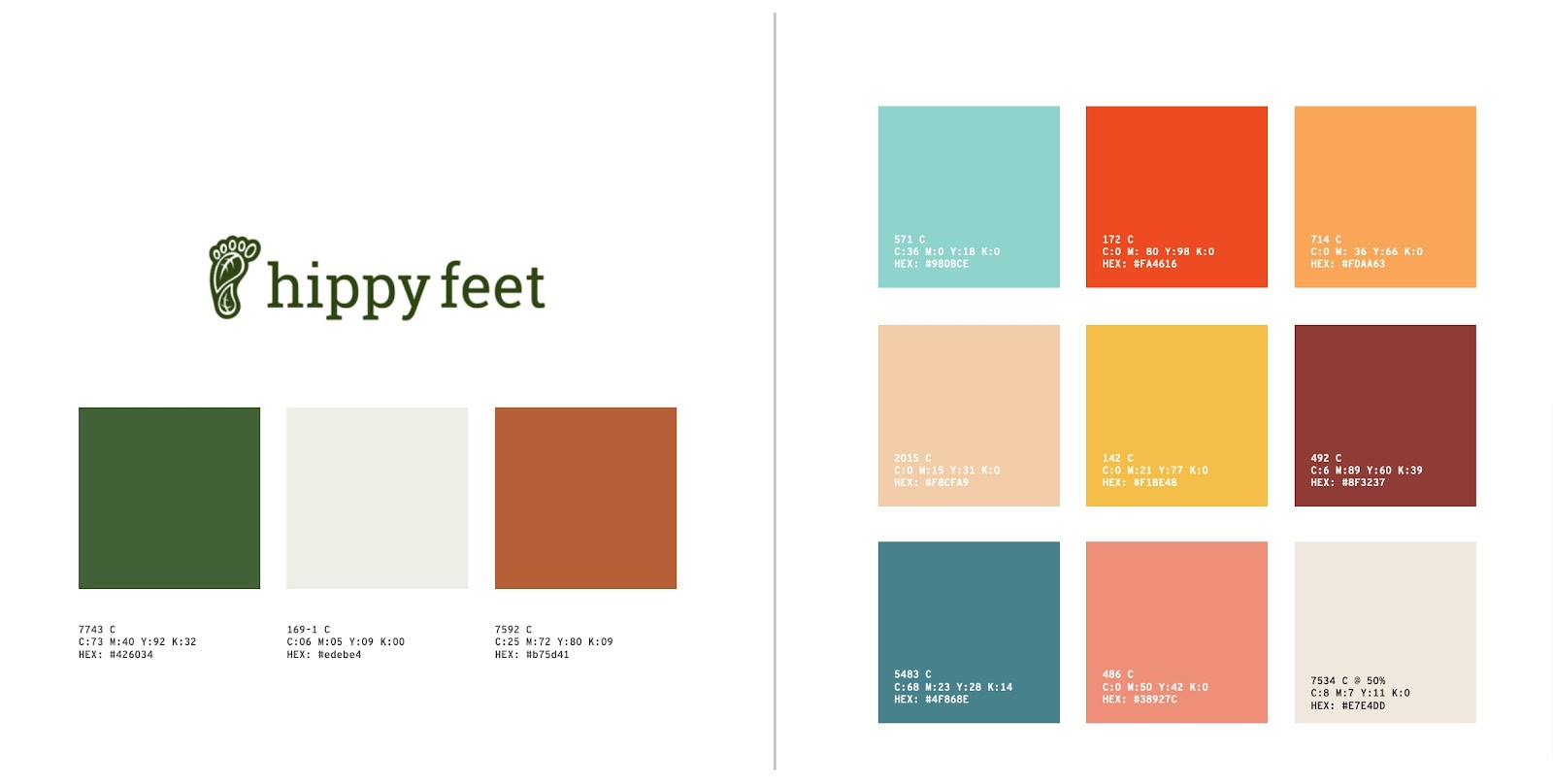
Your branding can change over time, but you should always stay consistent with it wherever your brand interacts with the public (i.e., your store, social media, customer support, email, etc).
Now bring your brand identity to life in your store. How you do this will depend on your platform.
WooCommerce and Magento users will need to enlist the help of developers to make their stores look exactly the way they envision them.
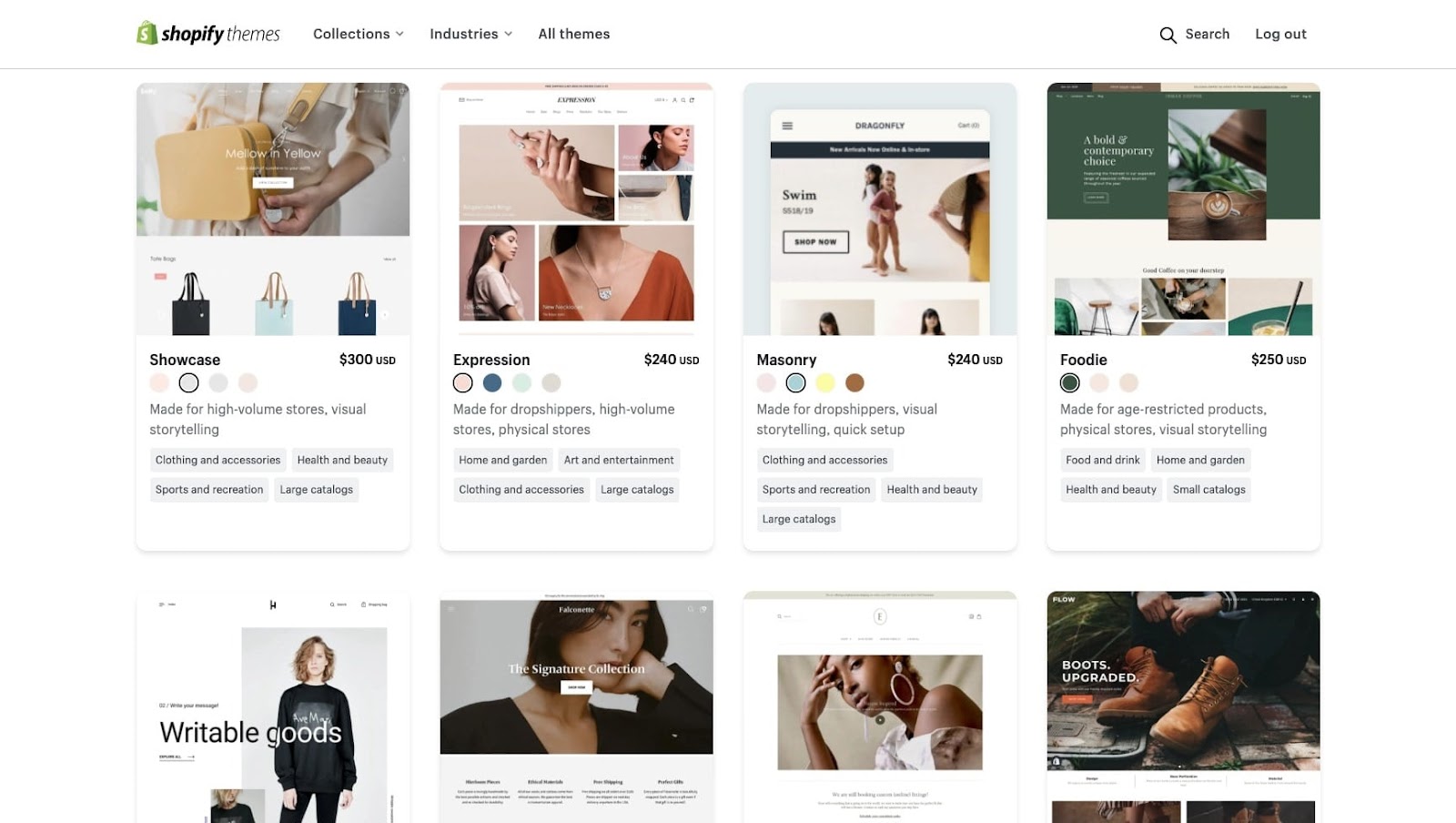
For Shopify, you can choose from free and paid themes—the best of which we rounded up in a handy guide.
Each theme comes with its own visual style and functionality—from sidebar navigation and cross-selling capabilities to product filtering and blogging features.
Within Shopify, you can do some limited theme customization in their theme editor, which allows for adding and moving page sections and updating general theme settings to match your brand identity.
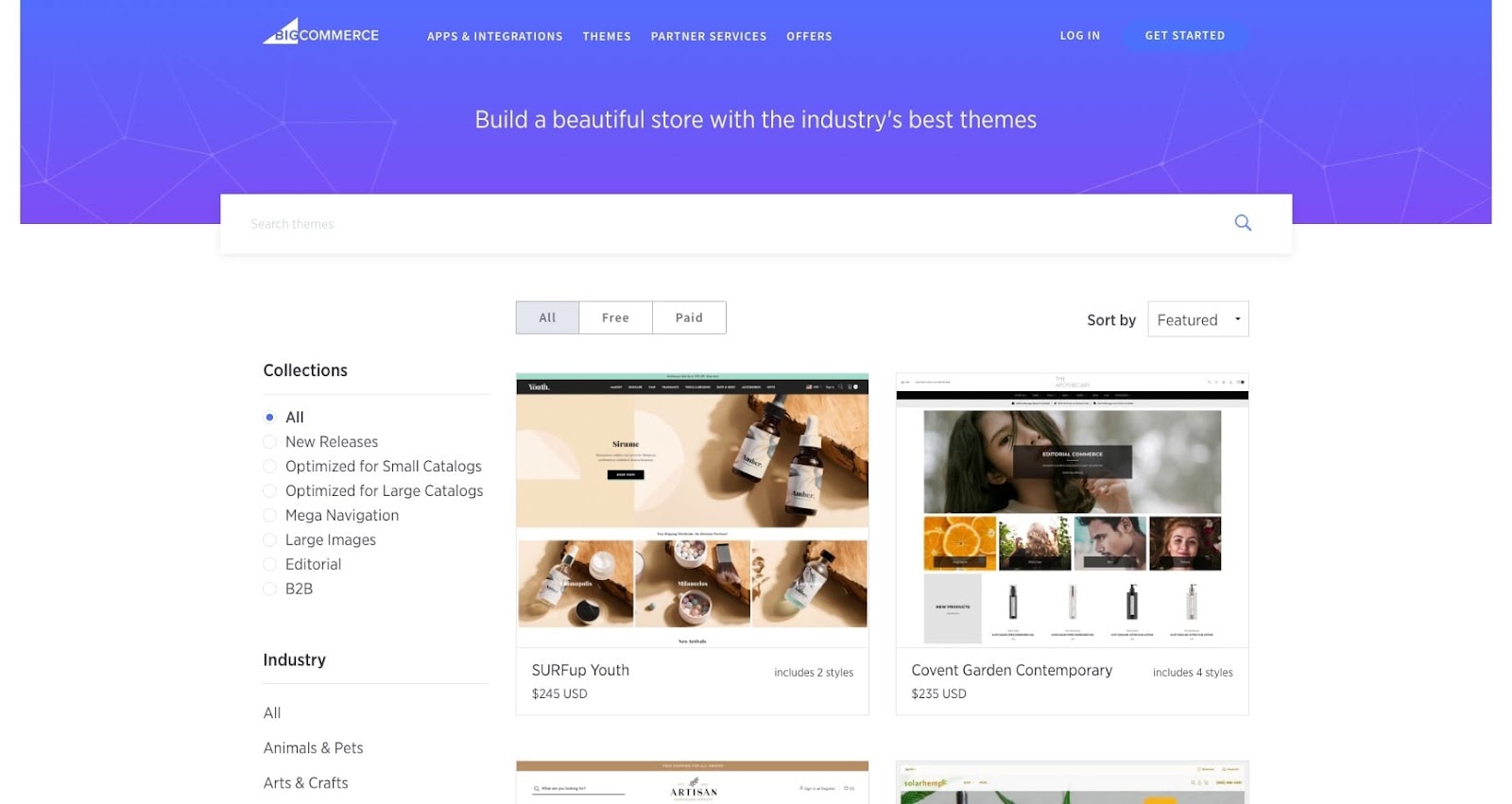
BigCommerce also has a great collection of themes to choose from (with some really great free theme options available too). You can also customize your BigCommerce theme within their editor, with configuration options limited by your theme.
Where theme customization has its limitations in BigCommerce and Shopify, Shogun Page Builder opens up the ability to make your store look just the way you want—no code required.
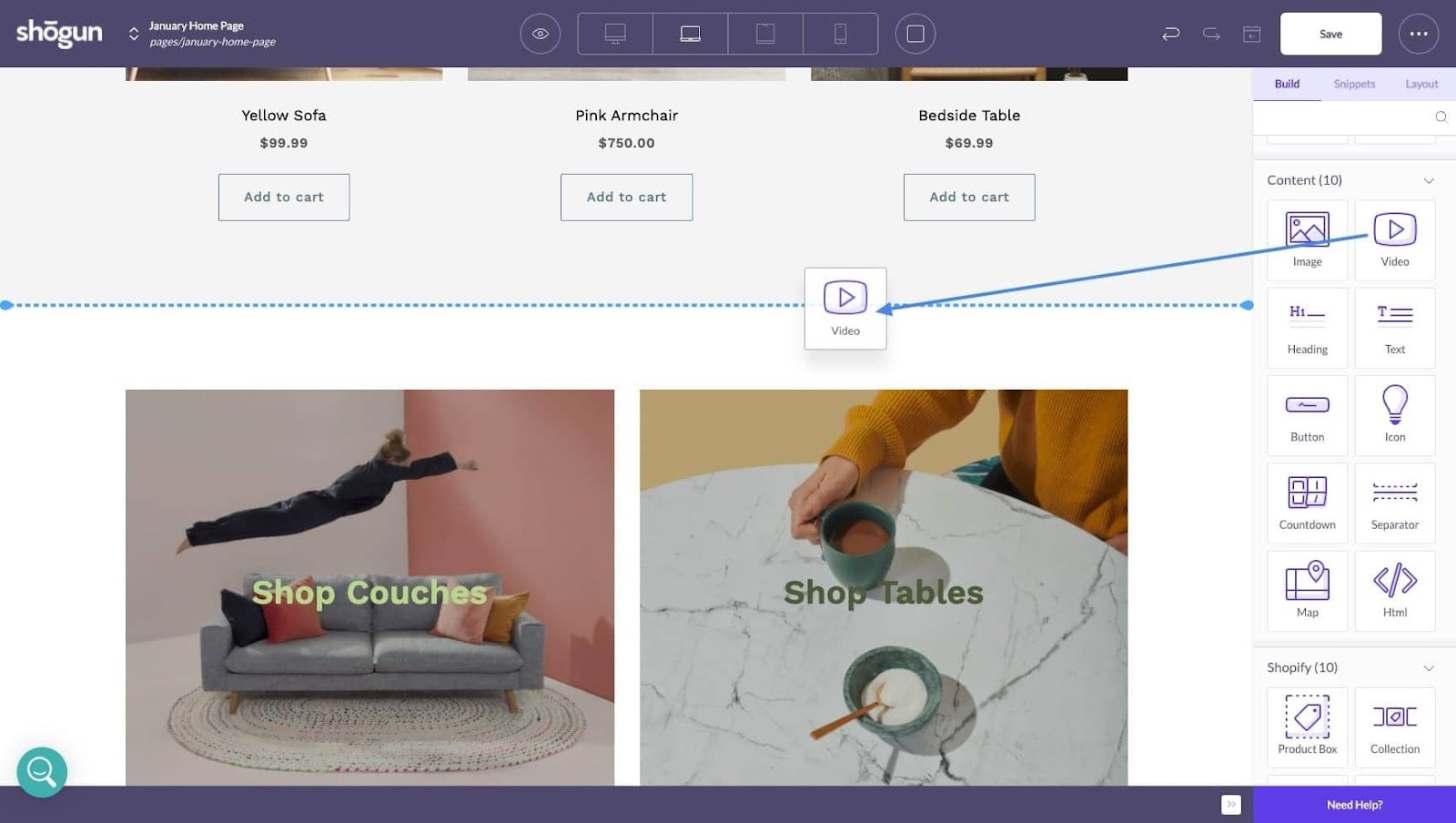
Page Builder has nearly 40 page elements that can simply be dragged and dropped into place—from your standard headings, text, and image elements to your more lively video, accordion, and slider elements.
You’ll want to build out your must-have standard store pages:
- Coming Soon page. We’ll touch on this more in the last step, but having a pre-launch page will allow you to start marketing before you even go live, giving you insight into potential popularity early on.
- Homepage. This is your most trafficked page and where you tell the world about your offering.
- About Us page. Tell your visitors who you are, what your brand stands for, why your mission and vision are worth supporting, and your passion for what you sell. See examples of really great About Us pages here.
- FAQ page. Put yourself in your customers’ shoes and then answer the questions that might be holding them back from buying.
- Contact page. Make it simple for them to get in touch with you if they have extra questions or have an issue with their order. They will deeply appreciate it.
- Product page. This is the page that will ultimately convince them to buy or make them move on. Use compelling product descriptions, awesome product photos, and clearly define your subscription options.
And, to help support your efforts to drive traffic through your store and into checkout, you’ll need dedicated landing pages that speak directly to what they need at that moment.
These include special offer pages, product launch landing pages, and most notably here, subscription education pages. Brands like Copper Cow have used subscription landing pages to double their conversion rates in A/B testing.
The best ecommerce landing pages help guide shoppers more reliably toward conversion, educating and persuading them with great content and visuals.
#cta-visual-pb-ee#<cta-title>See 25 Gorgeous Custom Landing Pages<cta-title>Get inspired by jaw-dropping custom Shopify landing pages from incredible brands.Download the ebook
6. Plan out fulfillment and inventory
OK, you’re getting close to showtime. But, you need to figure out the logistics of it all—stocking your products and then shipping them out.
The first and most consequential decision here will be whether you will be fulfilling the orders yourself or outsourcing this process to an order fulfillment company.
To do it yourself, you need to account for several things to stay orderly (and sane):
- How frequently orders ship. Do all orders ship out on the same day, or are shipping schedules unique to customers? This will decide how you staff your warehouse and when you purchase your stock.
- Your packaging options. Does your subscription always use the same box, or does it vary? Are there multiple subscription packages with different box sizes? Make sure you are budgeting correctly for packaging and always have what you need on hand.
- The variability of your product offering. Does your product line continuously change for each new subscription box? You’ll need to stay vigilant with inventory and warehouse management to keep your process streamlined and efficient.
“If you decide to tackle this in-house, our ideal golden rule is one 1-touch/action per person. This means you build your assembly line (family members, employees, or in-laws) to help package the products.
For example—if you have a glass jar that requires the lid screwed on, bubble-wrapped, labeled, placed in a beautiful branded box, and then barcoded, you ideally want 4-5 people doing it to limit potential errors and find the most efficient process possible.”
— Blair Forrest, Co-Founder of AMZ Prep
If you choose to go with a third-party solution, you’ll want to find the best order fulfillment company for dealing with kitting (such as MyFBAPrep or NewEgg).
If the kitting process is complex, you need to make sure you are choosing a company that is experienced with that work. If done right, you’ve taken a lot of work off your plate. If done wrong, you have to spend more money to fix the mistakes and mend your customer relationships.
You’ll send them all the products they need, give them instructions on how to package, and they’ll handle your subscription box orders and send them to your eager customers.
When just starting out, you might want to keep the process in-house to better understand how it works, what it costs, and what outsourcing would look like as you scale. You can have it both ways!
Whether you fulfill yourself or have someone else handle it, you’ll need a great inventory management solution. There are lots of great inventory management apps for Shopify and BigCommerce, which can sync stock levels across all of your sales channels and fulfillment centers.
When you’ve mapped out your shipping strategy, create a shipping policy page on your store that explains how it works and what your customers can expect.
Or include it on your lovely FAQ page. This will cut down on any miscommunication with your customers, making everyone happier.
7. Start marketing your subscription box

Subscription marketing can begin early with a pre-launch landing page that declares your intentions to the world and starts building an email list of future customers.
So, as you are going about the business of steps 1-6 above, you can be getting ahead of the marketing game like the ecommerce business genius you are.
Beyond that, you can use several marketing strategies to drive valuable traffic to your store.
These marketing channels include:
- Paid advertising. Ads are a surefire way to get immediate high-intent traffic to your store. The types of ads you can run are numerous, including Google search ads, Instagram and Facebook ads, retargeting ads, and display ads.
- Social media marketing. Start building a following on the social media platforms that best fit your audience (Instagram is great for ecommerce brands). It can increase your brand awareness and enable you to start powerful user-generated content (UGC) campaigns.
- SEO. Driving long-term organic traffic will pay off over time, netting you tons of free traffic. While your store pages can rank for commercial keywords, you might want to consider starting a blog to amp up your content marketing efforts and capture visitors in the consideration phase of their journey.
- Email marketing. As sales begin to come in and leads start piling up from your awesome landing pages, you can create email marketing campaigns that nurture different types of customers toward purchase or repurchase.
These channels will net you new traffic that you’ll want to drive to specific landing pages on your website built to convert the target audiences you send there.
Your store pages have a significant role in driving shoppers to buy and increasing average order value (AOV). UGC can be used across your store to earn the trust of potential customers, while upselling and cross-selling tactics can push their cart sizes up.
To find the elements that work best for your store pages, you’ll want to consider using A/B testing. With time, you’ll find the page layouts that really drive sales.
As you grow, you can build referral and affiliate programs that deputize your loyal customers as brand ambassadors, creating a ripple effect of new sales.
There are so many facets of ecommerce marketing that you can test and measure to get the best return on investment from your efforts. Every store is different, and the mix of strategies will depend on your particular situation.
Ecommerce subscription FAQs
For any lingering questions, here are some answers for you. Let us know if there are any questions on this topic that we could add!
What are the most successful subscription boxes?
According to Clutch’s report from 2019, the top subscription boxes were Dollar Shave Club (29%), Ipsy (21%), Blue Apron (17%), Barkbox (17%), Hello Fresh (16%), Birchbox (14%), and Sephora Play (14%).
The most popular subscription program, in general, is Amazon’s Subscribe & Save by a mile.
What age group buys subscription boxes?
According to McKinsey’s report from 2018, US ecommerce subscribers are more likely to be younger (25-44 years old), live in cities, and have disposable income.
Do subscriptions increase revenue?
Yes, subscription models create recurring revenue, which compounds monthly as the number of subscribers increases. These customers are also easier to retain because the nature of the transactions is so light-touch and automatic.
How fast is the subscription box industry growing?
Based on the data and projections from Statista, US sales grew 41% from 2019 to 2020 and 19% from 2020 to 2021 (with incomplete data from 2021). From that point on, they estimate a growth of around 18% going into 2022 and 17% into 2023.
Build a subscription program to watch your revenue climb
Assuming your product idea is a great fit for the subscription business model, it could very well be the key to driving extra revenue for your store.
By following these steps and creating an exceptional ecommerce experience for your customers, you could soon have a thriving subscriber base that is falling over itself to give you their hard-earned cash.
#cta-visual-pb#<cta-title>Build powerful landing pages for your subscription program<cta-title>Customize your store the easy way to build the most effective sales funnel for your awesome new subscription program.Start designing now

Sean Flannigan
Sean is one of Shogun's tireless content marketers. When he isn't creating exciting ecommerce content, he's probably biking or at the park.



